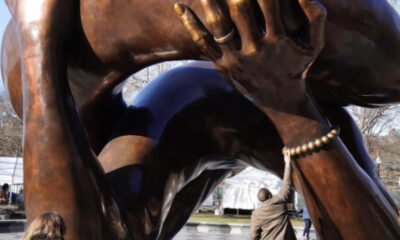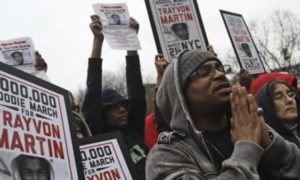March on Washington,politics
A March of Character, Not Color

The summer of 1963 raised the social temperature of the nation and the growing awareness of Diane Davenport, a young college student at Millikin University in Decatur, Illinois.
“I grew up outside Chicago, and I can’t say I had that much experience with African Americans. I had my eyes opened up pretty quickly in three years.”
At Millikin, Davenport majored in music. She found four other music majors, and they became friends. They were African-American. She was white, and together they decided to attend the March on Washington.
Davenport says, “I was paying attention to the news at that time with the Jim Crow laws. We cooked it up and decided we were going to D.C. when we heard about the big march. At the time, we didn’t know Dr. King was going to speak.”
She recalled, “Getting there is what was so exciting!” We went in a hippie bus that we painted with peace signs. Many of my peers just thought I was totally off the wall because I was around some pretty racist people.”
But, the negative talk didn’t dissuade Davenport. She rode the “hippie bus” with her friends. When they arrived in the nation’s capital, they eagerly embraced the spirit of the large crowd gathered for the historic event.
Fifty years later, Davenport still sounds energized when she talks about the March. “There we were. We went early because we knew there were going to be a lot of people. We got a spot on the front part of the lawn near the front of the Lincoln Memorial. We had fun staking out our territory, getting to know people around us.”
Davenport readily recalls the performances of Bob Dylan, Joan Baez, Mahilia Jackson, and others. When Dr. King stepped to the podium to deliver his famous “I Have A Dream” speech, she “recorded the entire speech on my little Sony tape recorder.”
It’s a recording Davenport converted to compact disc a few years ago at the urging of her husband. She used the recording during her years as a music teacher in the University City school district in the St. Louis area. Davenport continues to utilize the recording as a tool to encourage discussions about race in America.
Five years ago Davenport retired, but her love of music keeps her involved with students. “I still share my story with my campers. I tell them we are here so you can use your music, your dance, your drama to tell a story. And, she is still telling her story.”
Davenport returned to Washington earlier this year for President Barack Obama’s second inauguration. She described it as “déjà vu.” She voted for President Obama in 2008 and 2012. Unfortunately, this longtime advocate of racial harmony says she believes “the optimism has dried up a little bit. “
With a sad note marring her voice, Davenport sounded disappointed. “You have to wake up and see what’s going on in the world and be actively engaged. We don’t need any more laws. We need people respecting each other’s diversity.”
[slider_pro id=”31″]

-

 Featured10 months ago
Featured10 months agoCalifornia Is the First State to Create A Public Alert for Missing Black Youth
-

 Featured9 months ago
Featured9 months agoAfrican American Leaders Stay the Course Amid Calls for President Biden To Bow Out of Race
-

 Featured10 months ago
Featured10 months agoThe Debate Fallout Lands on Both Candidates
-

 Featured9 months ago
Featured9 months agoPresident Joe Biden Decides to Withdraw from the Presidential Race
-

 Featured9 months ago
Featured9 months agoIn One of His Final Speeches as President, Biden Says It’s Time for ‘Fresh Voices’
-

 Featured9 months ago
Featured9 months agoPresident Joe Biden Describes Shooting of Donald Trump As ‘Sick’





